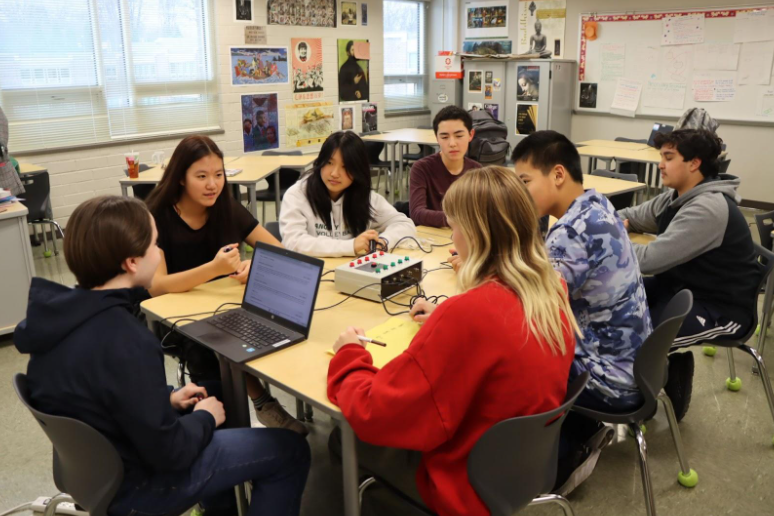The Langley quiz bowl club’s weekly, after-school practices are just like the real competitions, except in a more casual way. The only major difference is that, at the practice, the club practices in a free-for-all, while real tournaments are played in small teams.
During the practices, one person reads out questions from a packet, which are taken from previous, real competitions. The others each have a buzzer and attempt to be the first person to “buzz”—and then answer the question correctly in a short amount of time.
The challenge is that each person can buzz only once and the topics vary from science to fine arts to history. Additionally, if someone buzzes before the question is fully read and doesn’t provide the right answer, the team gets a penalty of 5 points. A correct answer is worth 10 points—or sometimes 15 points, if a player buzzed before a specified point (often denoted by an asterisk) in the question.
While the rules are fairly simple, quiz bowl practice helps the team improve in multiple ways. Ryan Minton, a freshman, has competed at both the high school level and the middle school national level.
“[Practices] really help to especially improve the team dynamic,” Minton said. “Because when you work with other people, it really helps to just make you feel more comfortable with the people there.”
Another aspect only able to be improved in practice is the skill of “buzzing” and answering a question. According to Ian Hoffman, the quiz bowl club’s co-president, buzzing requires more than just knowing the right answer.
“A lot of new players…[are] very nervous and they don’t buzz in very often,” Hoffman said. “Being at practice gives them a lot more confidence to be able to buzz in, especially since more often than not, they do know the answer.”
Arguably the most important aspect of quiz bowl, practice allows the players to add to the knowledge that they know. Quiz bowl questions are styled so that every question consists of multiple, different facts or clues that get progressively more well-known. For example, here is a sample question provided by NAQT, the official organization for quiz bowl:
Combining the Standard Model with a quantum mechanical explanation of this force would produce a “theory of everything.” Curvature of light by this force causes its namesake “lensing.” In 2016, the (*) LIGO experiment announced the detection of waves named for this force produced by a black hole merger. Objects on Earth accelerate at 9.8 meters per second-squared as a result of—for 10 points—what attractive force? Answer: gravity or gravitational force (accept gravitational lens(ing) or gravity waves or gravitational waves or gravitational radiation)
While specific questions aren’t often repeated, the answers and clues often are. When an answer or clue comes up often in practice, players can learn it, knowing that it’s likely to come up again.
“I have gotten so many questions where I’m like: ‘Oh, I heard that in practice a few weeks ago; now I know it,’” Minton said.
Outside of the practices, the players of the quiz bowl club use different resources to help study and learn facts. According to Hoffman, reading, looking up topics, and paying attention in class are good ways to learn more information outside of practice. However, the interests of the players are just as, if not more important than the specific resource used.
“Here at Langley, we do not have as big a club as other schools, like TJ,” Hoffman said. “Being able to have players that have unique interests that are specific to a category definitely helps to be able to create teams that are most effective…the team overall is able to know every type of question and every ounce of knowledge.”
Additionally, being interested in a specific topic is more fun for the players.
“I really love geography,” Minton said. “In my Youtube recommendations, for example, I just watch videos for fun…while people might watch games or something, I watch geography-related videos, and they just inadvertently help me in quiz bowl.”


